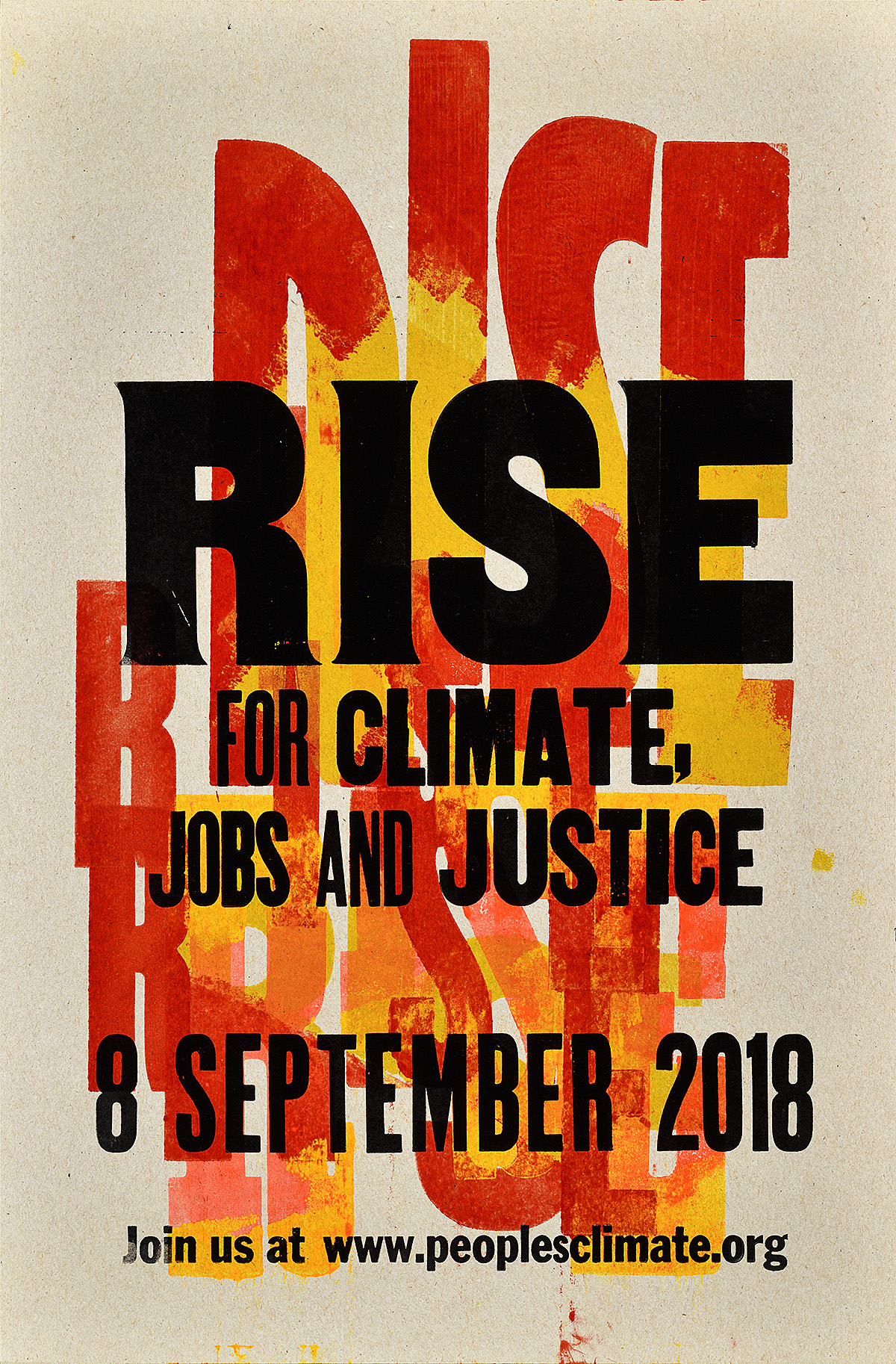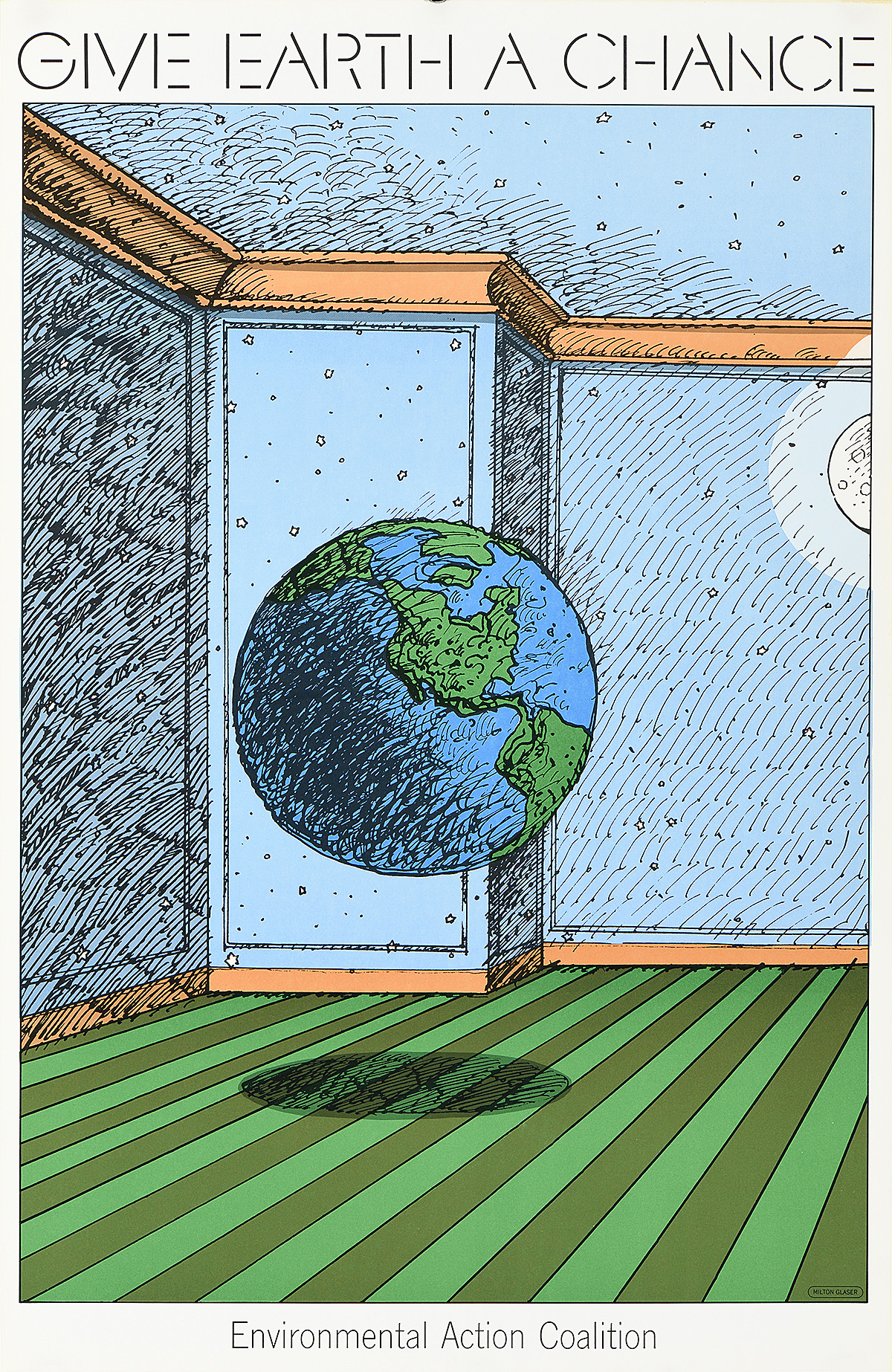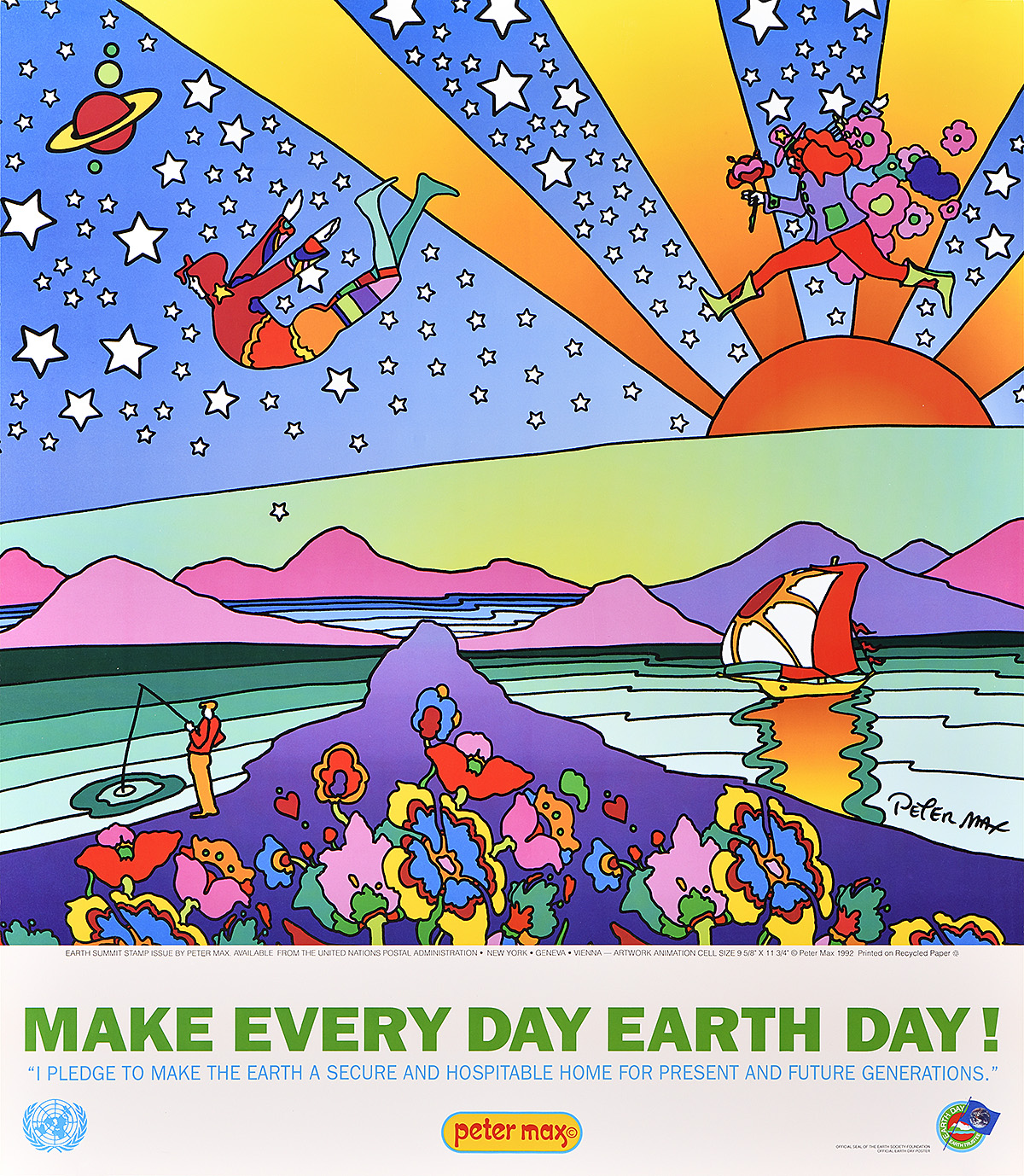
Earth Day in Posters
.Tim Medland is the curator of We Tried to Warn You: Environmental Crisis Posters, 1970–2020.
It is hard to overestimate the effect of the first Earth Day in 1970. Before that event, environmental groups in the United States and in other countries around the world were focused on single issues, frequently based on local concerns. In America alone, you could have groups dedicated to counteracting the impact of smog in Los Angeles, river pollution in Cleveland, and bird welfare in New England. What Earth Day allowed for and catalyzed was the weaving together of such disparate threads into the cohesive fabric of what we now recognize as modern environmentalism. It emphasized the fact that each of these localized groups has elements in common and could, would, and should support each other. This interconnectedness has all the more significance today given that we now recognize and understand the existential threat that global climate change represents for all of humankind.
For the first Earth Day march in New York City, Mayor John Lindsay shut down Fifth Avenue—though he had no way of knowing how massive an event it would be, with approximately one million people stretching from 59th Street to 14th Street. Nationally, Earth Day involved around 20 million people—approximately ten percent of the U.S. population at that time—and remains the largest organized event in the country’s history. More than fifty years later, Earth Day is a global occurrence, recognised as the largest secular event in the world, being observed in approximately 200 countries.
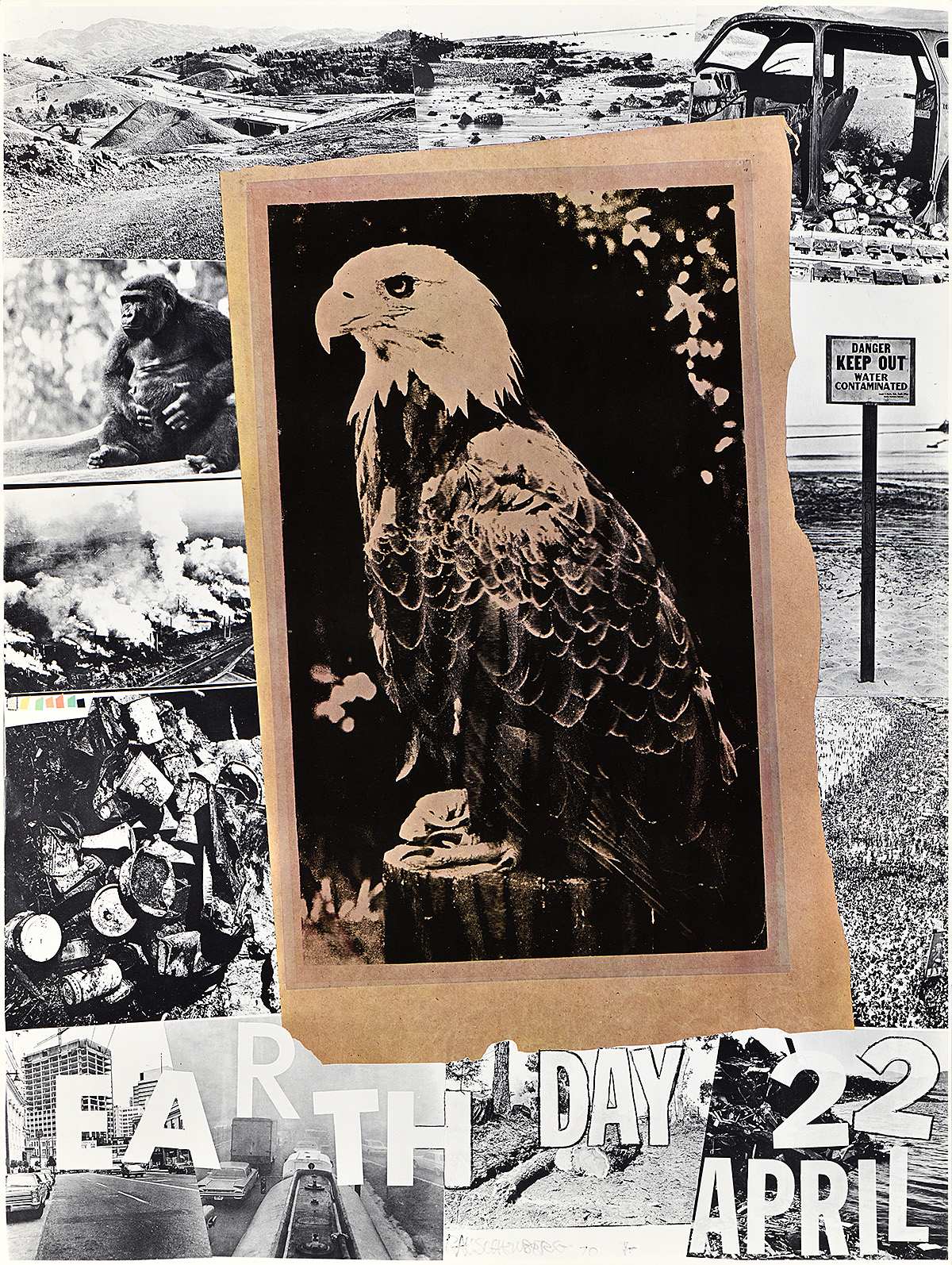
Earth Day (1970), Robert Rauschenberg
Posters have been indelibly associated with Earth Day from the beginning. Given the scale and ambition of the event, it is logical that the first poster commissioned to represent it would be designed by an important artist. In 1970, Robert Rauschenberg was the most famous living artist in America, and offered his time and talent pro bono to the cause. His composition features a bald eagle (emblematic of the United States) in the foreground surrounded by muted images of endangered wildlife, landscapes scarred by indiscriminate mining, polluted cities, contaminated waterways, and unconstrained smokestacks. He does not downplay the nation’s environmental problems—from coast to coast, America had ravaged itself in the name of economic progress. No one could be left in any doubt of the scale of the problem. In the months following, Congress would pass the Clean Air Act, the Clean Water Act, and sanction the creation of the Environmental Protection Agency.
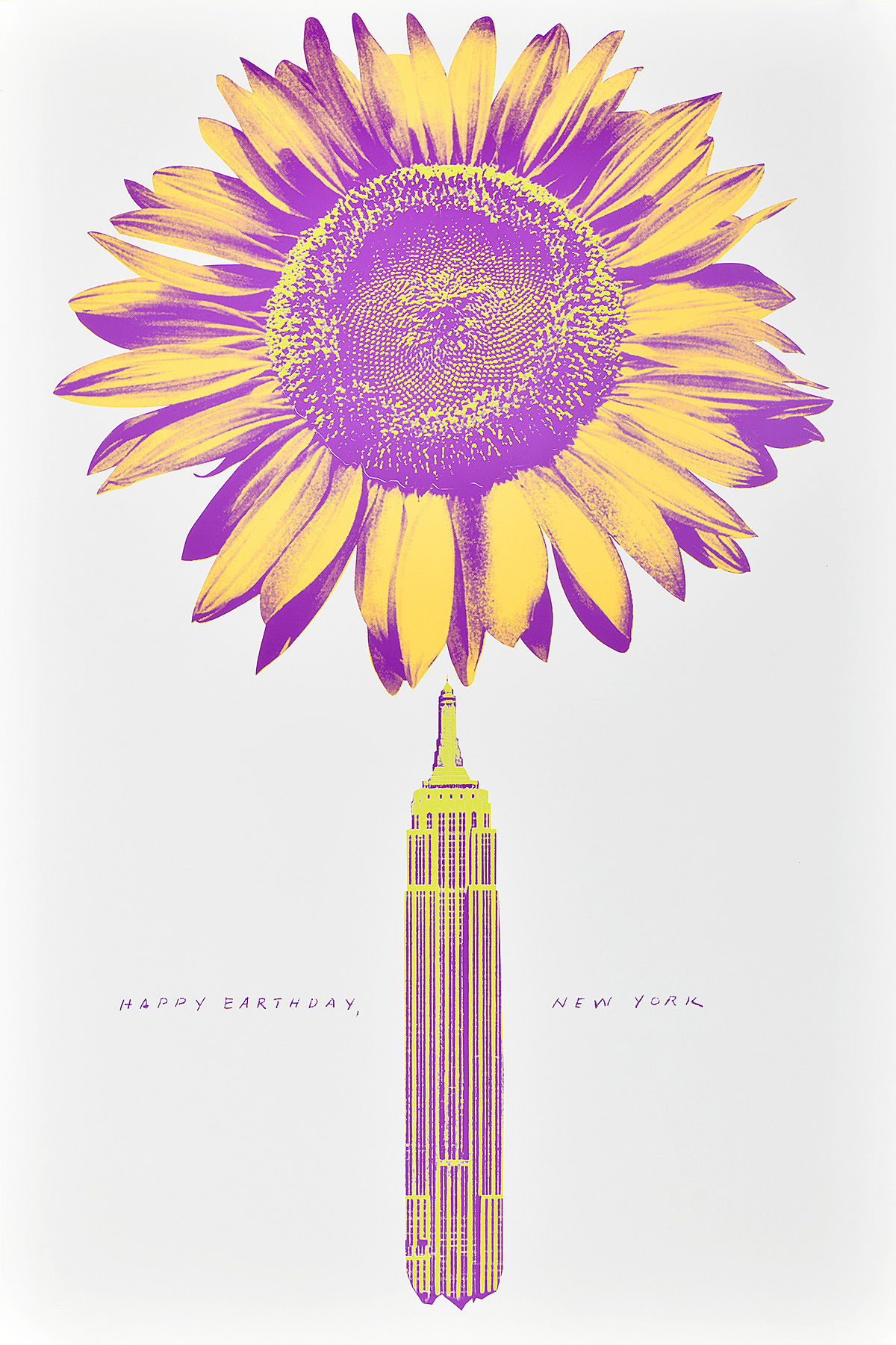
Happy Earthday, New York (1992), Paula Scher
On a rather more cheerful note, this poster by Paula Scher is more concerned with celebrating nature than highlighting environmental concerns. A joyful sunflower erupts from the top of the Empire State Building, celebrating an imaginary world in which the city and nature live in harmony. At this point in time, American environmentalism was more focused on this type of propaganda, holding on to a bit of the hippie aesthetic and mentality of the previous generation rather than expressing the horrors of what was to come.
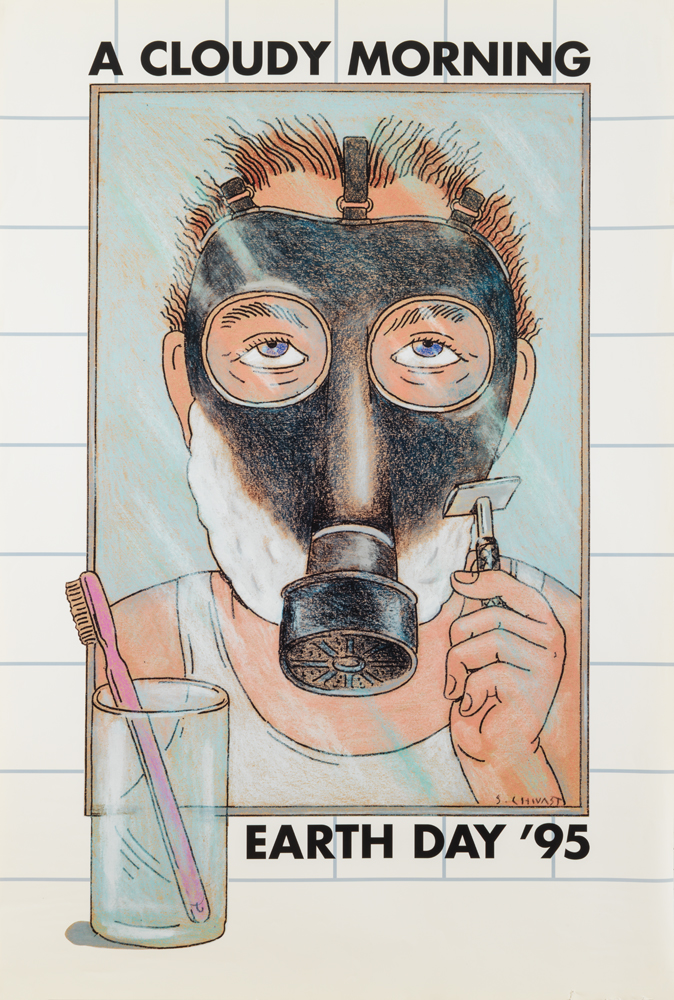
Earth Day ’95 (1995), Seymour Chwast
Seymour Chwast’s poster from a few years later confronts the appalling air quality that still exists in many parts of the world with a tinge of dark humor. His Earth Day design is a warning, not a celebration, providing the viewer with something mundane, ridiculous, and frightening. According to the World Health Organization, ambient air pollution annually contributes to 3.5 million premature deaths.

Earth Day (2000), Bob Masse
For the 30 year anniversary of Earth Day, the organization commissioned veteran rock music poster designer Bob Masse to create a poster. In keeping with his psychedelic style, his composition is a maximalist, vibrant image of a female figure inspired by the work of Alphonse Mucha. In lush, glamorous Art Nouveau lines, she is a standin for a Gaia figure holding a model of Earth.
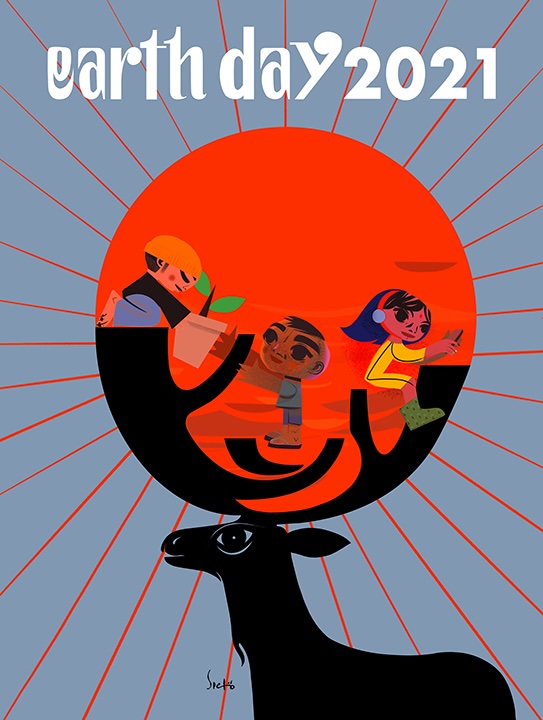
Earth Day (2021), Speto
The Brazilian artist Speto’s official poster for Earth Day 2021 marries that country’s street and folk art styles in a vibrant composition. The image is an embodiment of the hope of children, the life-giving rays of the sun, and the cradling security of a stag’s antlers, indicating that man and nature are unified.
While a small selection, all of these posters for Earth Day demonstrate that there is no one way to depict the challenges facing humanity or to motivate people to step up and change their behavior for the environment. The unrelenting nature of the global climate crisis has been characterized as “slow violence,” and there is no doubt that trying to countermand that by compressing all the concerns and issues into one day of activism could be counterproductive. The hope remains, however, that if the larger popular imagination can be captured as it was in 1970 when the first Earth Day happened, we would be able to push legislators to enact even more concrete measures that have the potential to address the myriad environmental issues on a mass scale.
As to poster activism, the governing body behind Earth Day ran a campaign earlier this year encouraging the submission of student-designed posters under the theme of Planet vs Plastics, emphasizing the continued importance of posters as a means of propelling important environmental messaging.

